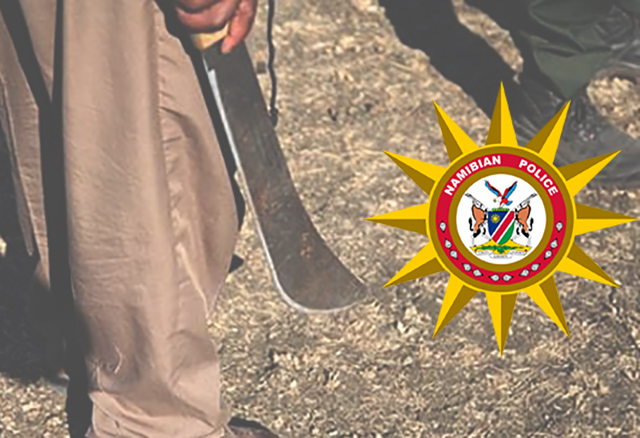A PROJECT to preserve the ancient knowledge of one of Namibia’s indigenous San tribes has borne the first fruits with the launch of information collected from the Haikom people, who used to live in the Etosha National Park before being evicted from their ancestral land by apartheid South Africa 50 years ago.
“For a long time the Haikom, their history and cultural heritage became largely invisible and their former presence within Etosha became largely forgotten,” Environment and Tourism Minister Willem Konjore said at the launch last week. “At last this has been now documented in the form of remarkable maps as part of the centenary celebrations of the park this year.The six maps and posters published here today show the association of the Haikom to many places in the park with indigenous names and explaining their former settlement and mobility patterns.”When the German colonial administration established the Etosha Park in 1907, they tolerated and indeed welcomed the presence of the Haikom and they remained there for another 50 years until they were finally forced off their land by South Africa.”Konjore said he hoped that other indigenous communities in Namibia would also start recording their history, culture and traditions “before it is lost forever”.The documentation of Haikom cultural heritage in the Etosha National Park began in 1999 as a small project – called Xoms /Omis – involving researchers from the University of Cologne, the University of Cambridge and a group of Haikom elders determined to ensure that their cultural history did not die with them.Social anthropologist Ute Dieckmann of Cologne University worked with a core team of elderly Haikom men, who grew up and lived in the Etosha National Park before being evicted in the 1950s.Dieckmann documented their knowledge about their former ways of life within the park, resources like edible plants, preserving water, their knowledge of game, hunting, processing and consuming meat.The Xoms /Omis Project runs under the auspices of the Legal Assistance Centre (LAC) with funding from Namdeb, the German development agency GTZ and Open Channels, a British organisation.A Canadian company designed the final drafts of the cultural maps.According to LAC Director Norman Tjombe, the maps – which depict and describe the places in Etosha as the Haikom know them, their hunting methods, animals and plants special to them – would bring the Etosha centenary into proper context, “since a large section (of people) are not celebrating, only remembering their eviction”.”These maps are a welcome addition to the literature on indigenous and marginalised minorities in Namibia and should add momentum to the public discourse on the injustice done to the Haikom and the human rights for which they have yearned so long,” Tjombe added.Jan Tsumib, a member of the Xoms /Omis Project and a nature conservation officer in Etosha, said the project also had the blessing of the Ministry of Environment and Tourism.”But tonight I want to ask Minster Konjore a big favour – to give us, the Haikom a share of land in the Etosha Park.”Dr Dieckmann told the audience that future projects would include a heritage archive of maps, video interviews and written resources to be freely available to all researchers and institutions.”We intend to compile a database of plants and their uses in Etosha, including veld foods and medicinal plants, a tourist guidebook focusing on the Haikom who lived in that area of the park which is today easily accessible to tourists.It will be designed in such a way as to ‘re-embed’ or ‘re-introduce’ the culture and history of the area into the natural landscape of Etosha.Selected waterholes and other culturally relevant locations accessible to visitors on the main tourist routes between Okaukuejo and Namutoni will serve on the one hand to portray the life of the Haikom who once lived there, and on the other hand to illustrate the history of the national park.”The reader who is equipped with the book whilst travelling in Etosha will start to see the area in a different light – no longer will it be the ‘vast white place’, but instead it will be populated with people and loaded with history through the book.”Some data will be digitised and published as tourist guides on CD ROM.Another plan is an educational book on the history of the Etosha area for use in schools and for sale to people interested in the history of the area.It will contain archive photographs, maps and oral history material.A website on Etosha is also envisaged.Sadly, two of the members of the project team died before the launch of the maps.Hans Haneb, born in 1929, died in November 2006 and Jacob !Uibeb, born around 1938, died in June this year.”Their deaths have been a great loss for us, the remaining members of the group.Their input and their knowledge cannot be replaced in any way,” Dieckmann said.”At last this has been now documented in the form of remarkable maps as part of the centenary celebrations of the park this year.The six maps and posters published here today show the association of the Haikom to many places in the park with indigenous names and explaining their former settlement and mobility patterns.”When the German colonial administration established the Etosha Park in 1907, they tolerated and indeed welcomed the presence of the Haikom and they remained there for another 50 years until they were finally forced off their land by South Africa.”Konjore said he hoped that other indigenous communities in Namibia would also start recording their history, culture and traditions “before it is lost forever”.The documentation of Haikom cultural heritage in the Etosha National Park began in 1999 as a small project – called Xoms /Omis – involving researchers from the University of Cologne, the University of Cambridge and a group of Haikom elders determined to ensure that their cultural history did not die with them.Social anthropologist Ute Dieckmann of Cologne University worked with a core team of elderly Haikom men, who grew up and lived in the Etosha National Park before being evicted in the 1950s.Dieckmann documented their knowledge about their former ways of life within the park, resources like edible plants, preserving water, their knowledge of game, hunting, processing and consuming meat.The Xoms /Omis Project runs under the auspices of the Legal Assistance Centre (LAC) with funding from Namdeb, the German development agency GTZ and Open Channels, a British organisation.A Canadian company designed the final drafts of the cultural maps.According to LAC Director Norman Tjombe, the maps – which depict and describe the places in Etosha as the Haikom know them, their hunting methods, animals and plants special to them – would bring the Etosha centenary into proper context, “since a large section (of people) are not celebrating, only remembering their eviction”.”These maps are a welcome addition to the literature on indigenous and marginalised minorities in Namibia and should add momentum to the public discourse on the injustice done to the Haikom and the human rights for which they have yearned so long,” Tjombe added.Jan Tsumib, a member of the Xoms /Omis Project and a nature conservation officer in Etosha, said the project also had the blessing of the Ministry of Environment and Tourism.”But tonight I want to ask Minster Konjore a big favour – to give us, the Haikom a share of land in the Etosha Park.”Dr Dieckmann told the audience that future projects would include a heritage archive of maps, video interviews and written resources to be freely available to all researchers and institutions.”We intend to compile a database of plants and their uses in Etosha, including veld foods and medicinal plants, a tourist guidebook focusing on the Haikom who lived in that area of the park which is today easily accessible to tourists.It will be designed in such a way as to ‘re-embed’ or ‘re-introduce’ the culture and history of the area into the natural landscape of Etosha.Selected waterholes and other culturally relevant locations accessible to visitors on the main tourist routes between Okaukuejo an
d Namutoni will serve on the one hand to portray the life of the Haikom who once lived there, and on the other hand to illustrate the history of the national park.”The reader who is equipped with the book whilst travelling in Etosha will start to see the area in a different light – no longer will it be the ‘vast white place’, but instead it will be populated with people and loaded with history through the book.”Some data will be digitised and published as tourist guides on CD ROM.Another plan is an educational book on the history of the Etosha area for use in schools and for sale to people interested in the history of the area.It will contain archive photographs, maps and oral history material.A website on Etosha is also envisaged.Sadly, two of the members of the project team died before the launch of the maps.Hans Haneb, born in 1929, died in November 2006 and Jacob !Uibeb, born around 1938, died in June this year.”Their deaths have been a great loss for us, the remaining members of the group.Their input and their knowledge cannot be replaced in any way,” Dieckmann said.
Stay informed with The Namibian – your source for credible journalism. Get in-depth reporting and opinions for
only N$85 a month. Invest in journalism, invest in democracy –
Subscribe Now!








